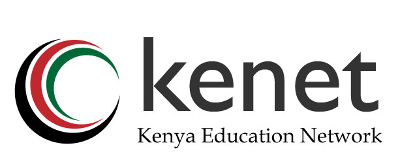You are here
Core Data 2017 Summary Analysis and Affordability of Internet Bandwidth Services
The Core Data 2017 has been completed and the aggregated data shows the trends in total enrollment (degree and non-degree) and degree enrollment for the three academic years (October 2015, October 2016 and October 2017). The percent of Internet expenditure to total recurrent expenditure as an indicator of Internet bandwidth affordability was also highlighted.
A. Trends in Total Enrollment AY 2015/2016 to AY 2017/2018
Table 1 shows that the total enrollment has continued to grow although the percent growth from October 2016 to October 2017 was only 7% compared to 28% growth between October 2015 and October 2016. It is possible that the total enrollment declined in October 2018 (we did not collect the October 2018 data). There was already a drop in total enrollment for private universities in October 2017.
Table 1: Total Enrollment data based on Core Data 2016 and Core Data 2017
|
Source of Data |
Core Data 2016 |
Core Data 2017 |
|
|
Category |
Total Enrollment AY 2015/2016 (2015) |
Total Enrollment AY 2016/2017 (2016) |
Total Enrollment AY 2017/2018 (2017) |
|
Public Universities |
333,593 |
451,905 |
495,009 |
|
Private Universities |
92,924 |
92,415 |
86,911 |
|
University Constituent Colleges |
1,648 |
3,157 |
4,506 |
|
Total |
428,165 |
547,477 |
586,426 |
B. Trends in Growth of Degree Seeking students
Table 2 shows that there was a slight increase in enrollment of degree seeking students ( 520,000 students in October 2017). The percent increase from October 2016 to October 2017 was again 7% compared to 30% increase from October 2015 to October 2016. It is now possible that the enrollment for AY 2018/2019 dropped below that of October 2017. Again, the overall private universities enrollment was most affected according to the data available.In general, universities are shrinking and that must have very significant cashflow implications for all universities.
Table 2: Degree Students Enrollment data based on Core Data 2016 and Core Data 2017 (Undergraduate and Post-graduate students)
|
Core Data 2016 |
Core Data 2017 |
||
|
Category |
Total Enrollment AY 2015/2016 (2015) |
Total Enrollment AY 2016/2017 (2016) |
Total Enrollment AY 2017/2018 (2017) |
|
Public Universities |
304,665 |
419,786 |
452,810 |
|
Private Universities |
69,516 |
64,981 |
63,095 |
|
University Constituent Colleges |
1,341 |
3,108 |
4,454 |
|
Total |
375,522 |
487,875 |
520,359 |
C. Internet Bandwidth Affordability
In order to measure affordability we calculated the percent of Internet expenditure to total recurrent expenditures of universities using the October 2016 enrollment data (AY 2016/2017) and the total recurrent expenditure in the FY 2016/2017. Table 3 shows the percent is only 0.8% overall. We also show the Internet bandwidth per 1,000 students which was 17 Mb/s per 1,000 students in the AY 2016/2017. We have come a long way from 2008 when the ratio was o.43 Mb/s per 1,000 students. The KENET e-readiness target is 20 Mb/s per 1,000 students which translates to a mere 0.2 Mb/s per student. In developed countries, the bandwidth per student is about 2 Mb/s, that means 10 times more. We can confirm that most universities had achieved the target of 20 Mb/s per 1,000 students as of October 2018 because of bandwidth allocations.
Table 3: Percent Internet Expenditure to Recurrent Expenditures and Affordability (AY 2016/2017)
|
|
Student Enrollment AY 2016/2017 |
BW/1000 Students |
Annual Internet Expenditure as a % of Total Recurrent Expenditure |
|
Public Universities |
495,009 |
15.7 |
0.8% |
|
Private Universities |
86,911 |
24.8 |
0.9% |
|
University Constituent Colleges |
4,506 |
25.4 |
2.3% |
|
Overall |
586,426 |
17.2 |
0.8% |
The reality might be very different in the AY 2018/2019 as the Core Data 2018 data collection begins in February 2019.
